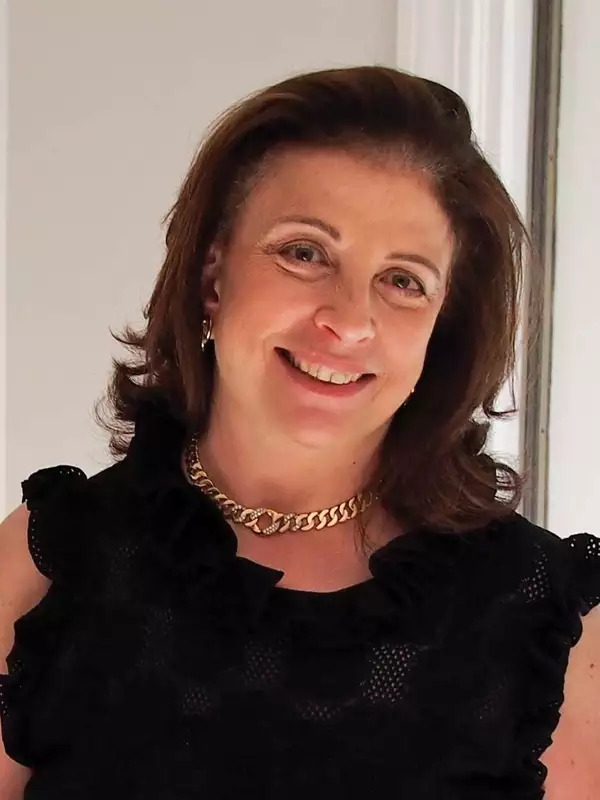
Bhinda Malla Shah ’56, Nepal’s first woman ambassador, led a bold life of courage, intellect, and service

Dr. Beryl Benacerraf ’71 read millions of ultrasound images during her long, illustrious radiology career, yet her insights remained one of a kind. In a 2015 Barnard oral history project, she spoke of seeing patterns in images that other radiologists had overlooked. Once, at a conference, she was the only audience member correctly identifying diagnoses during a slideshow presentation, which prompted the physician onstage to walk out to her seat and ask, “Who the hell are you?”
Benacerraf, who died on October 1 at age 73 from cancer, was a renowned radiologist and professor of obstetrics, gynecology, and reproductive biology and radiology at Harvard Medical School and Brigham and Women’s Hospital in Boston.
Her path to medicine, however, wasn’t without its challenges. Growing up, Benacerraf struggled with undiagnosed dyslexia but remained undeterred. She went on to train in radiology at Massachusetts General Hospital and Brigham and turned a lifelong learning disorder into a triumph by harnessing her brain’s greatest strength — the ability to notice patterns most people couldn’t see — into scientific innovation that improved patient care for pregnant people everywhere.
“I do have a gift that other people don’t have, and I will always stay ahead of the crowd and see more in an image than other people,” she told the Yale Center for Dyslexia & Creativity. “I was very controversial for a very long time. But I wanted an academic career and made it for myself.”
The finding that made her most famous in the field was her observation that an ultrasound image of an oversized flap of fetal neck skin, called a nuchal fold, was associated with a diagnosis of Down syndrome. This insight spared millions of pregnant people the riskier diagnostic procedure, amniocentesis, and upended conventional wisdom about how to estimate risk for bearing a child with the chromosomal abnormality.
“She was just a star,” said Ruth Steinberg ’72, an OB-GYN who admired but did not know her Barnard compatriot. “Benacerraf’s vision, and I mean that literally and figuratively, was extraordinary.” In the early 1980s, ultrasound technology was much more rudimentary than it is today, Steinberg adds. “If you saw something clearer than the weather map over Chicago, then you had a keen eye. And she saw whole babies.”
Still, the establishment initially tried to dismiss Benacerraf’s finding. “I was devastated,” she told a colleague for a profile published last year in The American Journal of Obstetrics and Gynecology. “But [I was] that much more determined to prevail because I knew I was right.”
Benacerraf, an only child, moved to New York City from France with her parents — who met as Barnard and Columbia students in the 1940s — when she was 7. She attended Brearley and then Barnard before following her father, a Nobel Prize-winning immunologist, into medicine. While at Harvard Medical School, she met her husband of 47 years, cardiologist Peter Libby. They married five months after meeting. The couple had two children, Oliver and Brigitte, as well as a series of beloved Russian blue cats. Libby notes that Barnard remained a quiet touchstone for his wife, who for years kept what he called “that ugly red vinyl armchair” from her dorm room in Plimpton. “She never wanted to give up this horrible piece of furniture because it had such sentimental attachment.”
Though celebrated for her groundbreaking discoveries, Benacerraf’s creativity and determination extended beyond research and into her hands-on patient care work, which she continued until her final days. Over 40 years, her practice saw more than 350,000 individual women, many of whom she examined personally. One example of this, as relayed by colleagues to her family, happened when a patient came in worried that her fetus was no longer moving.
“More and more senior people came in the room to try and get the baby to move,” says Oliver Libby, Benacerraf’s son. “My mom was the last person to come into the room. She looked over at the husband, who had a Starbucks cup. She said, ‘What’s in that?’ And he said, ‘Coffee,’ and she goes, ‘Okay. Ma’am, drink all that, and I’ll be back in five minutes. We’ll see what happens.’ And she came back and the baby was moving.
“Everyone else is losing their minds,” Libby says, “and she was able to just see a different way to get it done.”
Photo Courtesy of the Libby Family